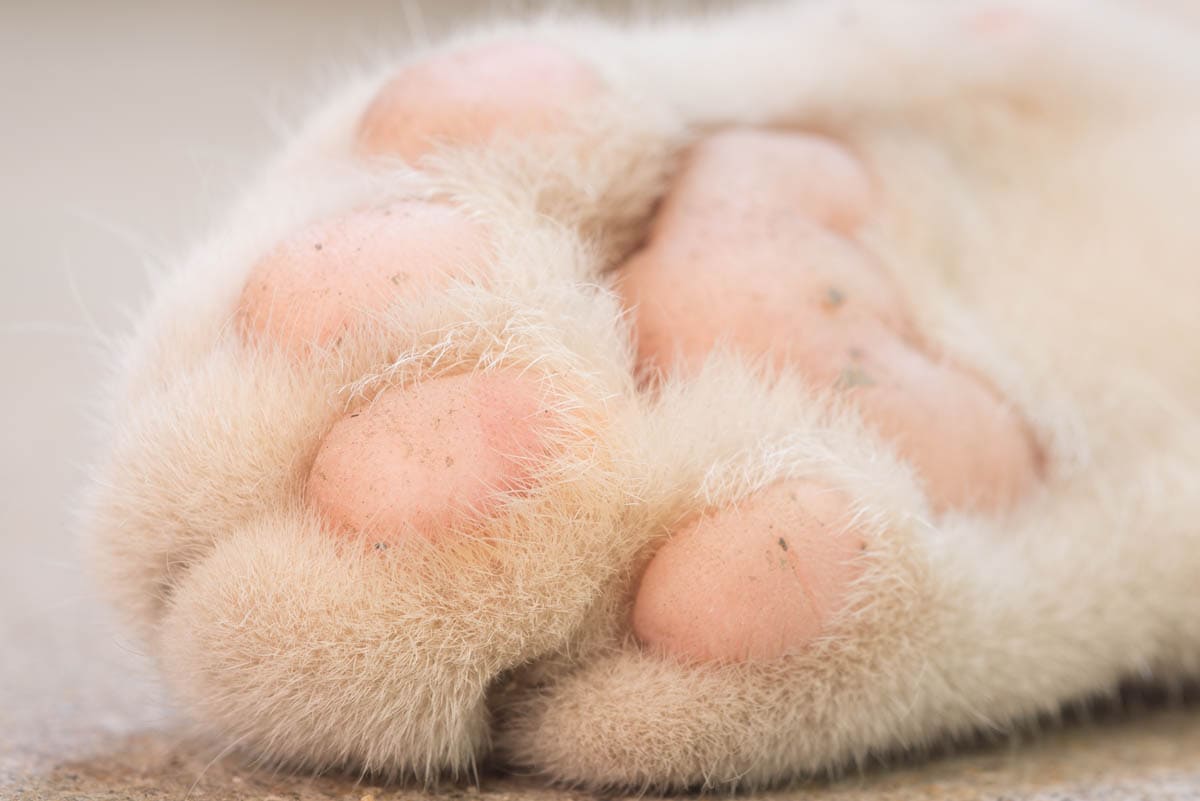At a glance
|
What is declawing?
Declawing is the surgical amputation of a cat’s claw and phalanx bone.
Outside the United States and Canada, it is almost unheard of, and even there it is declining in popularity. Los Angeles banned declawing in 2003 and New Jersey in 2017. It is illegal in almost every other country.
There are three methods of declawing cats, performed under general anesthetic.
Resco clipper method (guillotine method): This is the most common method of declawing and involves the use of a guillotine nail trimmer to cut through the bone. The problem with this method is that the nail grows from the last phalanx and if it isn’t removed in its entirety, there is a possibility that the claw will re-grow, when this occurs, the regrowth is usually deformed and will require surgical removal.
Disarticulation method: This involves the separation of the third phalanx by carefully disconnecting the tendons attaching the third phalanx to the second phalanx. It is more intensive than the Resco clipper method, however as the bone is completely removed, there is zero chance of the claws growing back.
Laser method: The method used for laser declawing is the same as the disarticulation method, however, a laser replaces the scalpel. Advantages are that there is less bleeding, however, it is a more expensive surgery. Advantages of this type of surgery include less pain and a faster recovery time.
Tendonectomy: This procedure doesn’t fall under the category of declawing as the claw isn’t removed, instead, the ligament underneath your cat’s toe is cut, which prevents the cat from protracting the claws. Weekly nail trimming is necessary for cats who have undergone this surgery as they are no longer able to scratch their claws.
After declawing, the open site is either stitched or glued closed and then bandaged. All of these procedures will require a 1-2 day stay in the hospital along with analgesics postoperatively. Provide your cat with shredded paper in the litter tray until the feet have healed.
Why declaw?
Most people declaw to prevent cats from scratching and damaging furniture or family members (both pet and human).
Cats do scratch, this helps to remove the loose, outer layer of the claw as well as keep the claws sharp, it gives the cat an opportunity to stretch his forelegs, shoulders, and back (a bit like a stretch when we wake up), and cats have scent glands ion the bottom of the paw pads which release pheromones which calm your cat.
Some people with compromised immune systems such as those with AIDS, diabetics, organ recipients or those undergoing chemotherapy may opt for declawing to reduce the risk of infection resulting from a scratch.
Side effects
Declawing doesn’t come without risks, which may include:
- Pain (post-surgery and in some cases lifelong).
- Post-surgical infection.
- Post-surgical bleeding. This is the most common complication of declawing.
- Wound reopening post-surgery.
- Scar tissue.
- If the veterinarian doesn’t remove the entire bone, the claw can grow back.
- Cats walk on their toes, and declawing leads to changes in gait due to weight now being placed on the second phalanx. Furthermore, over time, the severed tendons may shrink, resulting in the bone curling down, giving a clawed appearance to the foot. More weight is placed on the back feet immediately after the procedure which alters the cat’s gait. Over time, the weight is redistributed between the four feet, however, the second phalanx was not designed to be a weight-bearing bone, which results in an altered gait and the possible development of arthritis in later years.
- As some cats can experience long-term pain after declawing, behavioural issues may arise, most commonly inappropriate toileting as using a litter tray can cause pain and discomfort when scratching around in cat litter.
- Claws serve several functions including digging, climbing, self-defence and holding onto prey. Declawed cats are more likely to develop biting habits as a result of the loss of their claws as a defence mechanism.
Declawing alternatives?

There are several alternatives to declawing but the main goal is to prevent your cat from clawing and damaging furniture.
Behaviour modification:
- Providing your cat with a scratching post and working with the cat to encourage it to use that instead of your furniture. If space is a problem, you can buy small scratching posts that you hang over door handles that take up no room at all. For more information on training your cat to use a scratching post, read here. Watch how your cat scratches, is he scratching on horizontal or vertical surfaces? Each cat has its own preference, it is wise to purchase the appropriate cat tree or scratching post to suit.
Claw covers (Soft Paws):
- Plastic covers are placed over the cat’s claws, they last for 2-4 weeks.
Trimming the claws:
- See here on how to trim your cat’s claws
Medical indications
Occasionally there are medical reasons in which it will be of benefit to the cat to declaw. These may include a tumour, irreversible damage to the claw, claws that can’t retract and paronychia (nail bed infections).
In some cases, it is a choice between declawing a cat or surrendering him to a shelter or euthanasia.
Keep declawed cats indoors as they are not able to defend themselves.

